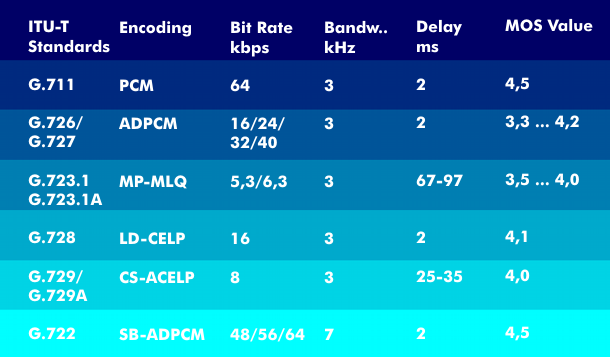G711
The ITU recommendation G.711 describes transformation methods for audio compression. This technique, which was internationally standardized by CCITT as early as 1969, is implemented in speech codecs that operate according to the µ-law method and the A-law method.
The described compression method is based on a logarithmic conversion of the audio signal and a pulse code modulation( PCM) with 13 bitresolution, which is converted into an 8 bit value after quantization with a logarithmic table. The logarithmization adapts the human hearing characteristics. The sampling rate of G.711 is 8 kHz, the compression ratio is 13:8, and the MOS value is 4.4.
The implementation of the G.711 recommendation in the A-law method differs from that used in the µ-law method by different 13:8 conversion tables.
The speech codec operates losslessly and requires little computing power. It is unsuitable for compressing high-quality audio. The G.711 codec is used in narrowband telephony, in ISDN and for transmitting audio under H.261. With Packet Loss Concealment( PLC), the speech codec has an optional feature that bridges brief dropouts caused by packet loss.


-bim-G-711-Codec_en.png)